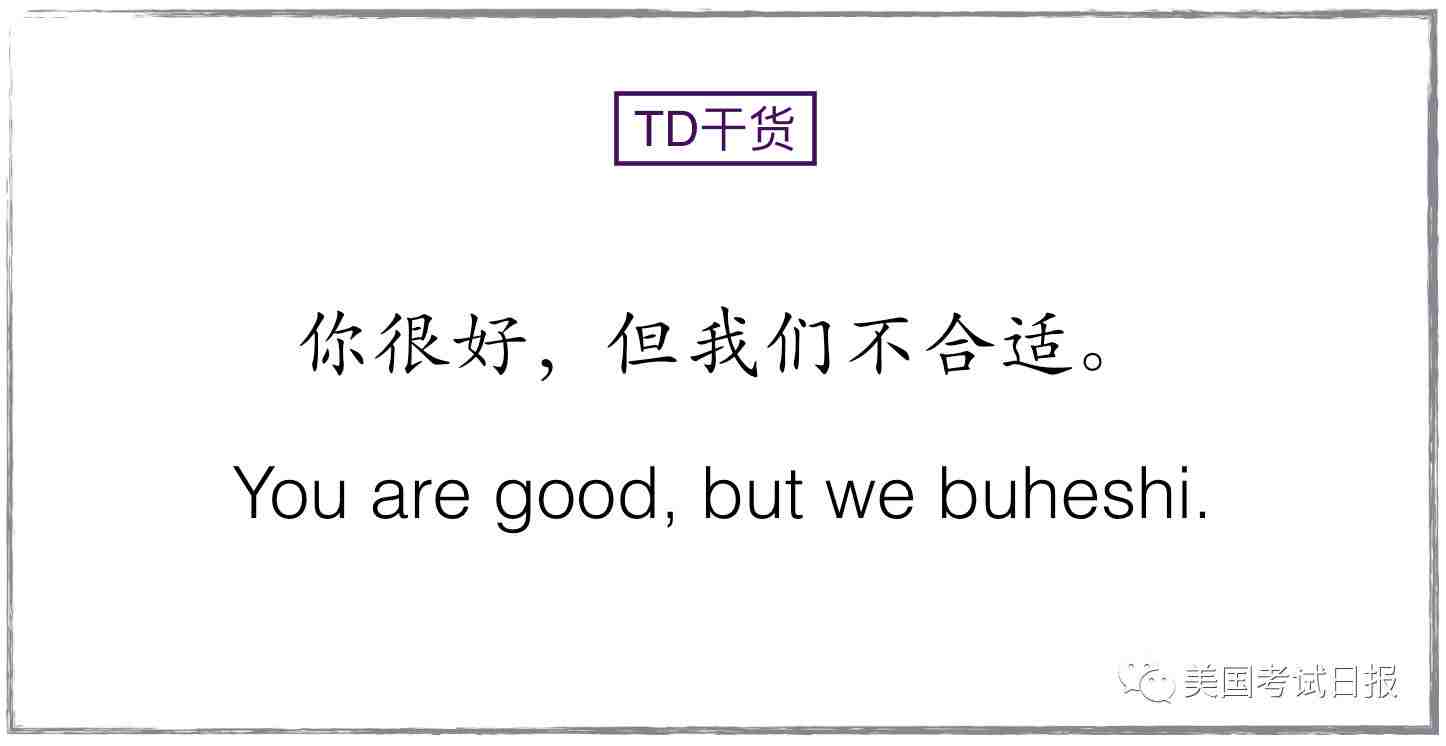托福写作中,一般人get不到的让步段使用技巧 || TD干货



托福独立写作里面经常会被提到的一个概念就是「让步段」,大意就是说在你讲完支持某一方的观点之后也照顾一下另一方的观点;这就好像女孩子决定了要拒绝你,却要说一句「你很好,但我们不合适」,这样的目的在于使得论证完整立体,逻辑也成型。
可一直以来,关于让步段的争议就一直没有听过。到底让步段要不要写,在哪里写,如何来写?来,让魏老师用3个例子讲给你听。
一提到让步,很多学生第一时间会想到although; even though; despite; granted这些或基础或高级的表让步的标识词;或者想到让步段:Admittedly, although A has some disadvantages, its benefits far outweigh the inconveniences; even if B has certain weaknesses in some occasions, it still has more influence than A. 总之,在很多人的概念中,让步更多的是一种在想不出如何进一步细化论述的时候,可以使用的一种折中的凑字数的方法。
在很多老师的教学体系之中也是如此。在传统的五段式议论文体系中,一篇议论文要求学生提出三个理由,即写出三个主体段来论证自己的中心论点。而很多情况下,受限于中式思维或者题目的难度,学生想到的分论点之间或有重合,导致虽然论点很快能够想出来,但是主体段的展开论述却遭遇难产;或者学生根本就想不到三个并列且合理的分论点。
这个时候,老师就会建议学生提出两个论点,然后用第三个段落来写让步凑字数,即所谓的让步段。当然,也有一些学生会视让步这一论证方法为洪水猛兽,认为既然需要有明确的论证立场,就丝毫不需要在文中提及对方的好,这样做会削弱自己的观点,因此极其排斥让步。
让步段的理念已经深入人心,但是其合理性却非常值得商榷。如首段提出的应用于让步段的经典句型,这样写出的段落非常空泛,缺乏细节,也缺乏符合逻辑的论证过程。我们如何论证一个事物的好处远远大于不便?又有没有严谨的推导过程可以证明一个事物比另一事物更重要?让步段也许能让目标设立在中档(18-22分)的学生有一个可以仿照的模板段落,但是如果致力于得到高分,这样的模板段落恐怕反而会有适得其反的作用,也有悖于托福写作的基本写作要求:use specific reasons and examples to illustrate your points。
那么,如何正确而合理地使用让步,让其能够最大化的发挥作用,完善逻辑论证,并帮助学生拿到高分呢?让我们先举几个例子👇
First,technology renders the communication even more complex.Some people hold the opposite idea, claiming that technology simplifiescommunication. It appears to be true that apart from more traditional ways suchas making phone calls or writing letters, nowadays we have more expedient ways,for example, sending text messages or E-mails. In fact, these high-techmethods increase our burden. Every New Year’s Eve, each member of my family isbusy sending text messages to our friends, classmates and colleagues. We areafraid of forgetting someone on the text list, even if he or she is just asimple acquaintance. We have to judge and weigh the words sent to differentgroups of people. This situation reminds me of the past, when we only need tocall a couple of friends in festivals, giving them sincere greetings.
Theexplosion of information has posed increasing difficulties to teacher. It is true that the Internet has brought students so muchconvenience to obtain information and knowledge from diverse channels. Thereare forums posting learning experience from the super scholars; and there arewebsites uploading the latest open courses lectured by famous professor of topuniversities. However, it is highly doubtful if information on theunauthorized sources is reliable and trustworthy. Students could be misled bythe incorrect or less responsible answer and comment. They may stubbornly counton the data seen from the website rather than believe what is taught in theclass. Even if some online resources are recognized andfree from errors, the amount of information is so overwhelming forstudents to digest. It is commonly seen that students happily download megabitsof learning materials but leave most of them half finished, or even never layeyes on them.
上面的两个段落中,标红的部分都占到了段落的几乎一半,其作用都是在让步,提出反方出现的事实信息,文章观点也并没有被削弱,反而读下来非常流畅。让步在范例中起到引入段落展开的作用,更自然的引出了下文的论证。这与中文中的先扬后抑的方法类似。
People in the past might haveless income and fewer things to buy and entertain themselves,but the positive side of this was that they didn’t have to work that hard inorder to have a comparatively decent life, based on the standard of thosedays. They could have many hours totheir own, which was why they could be healthier.
当然,让步也可以以范例三中的更简短的形式出现,同范例二中以even if 引导的句子相同,这样的让步应用更加灵活,在段内的位置也更加随意,应用范围也更广。
如何正确理解和应用让步这一论证方法,要重点注意两点:
1.让步的位置。尽量减少用一整个段落让步,这样就会重蹈覆辙,犯下让步段论述空泛的毛病;让步是一种同类于因果、例证的论证方法,用法也相同,应和其他论证方法结合,在主体论证段中使用,共同服务于证明分论点;较长让步最好出现在段落前面,如具有让步功能的句子一样,后面会紧跟着“但是”进行驳斥,这样在逻辑上更加连贯自然。2.从逻辑上分析,提出让步的目的是为了后面的反驳,所以两者应该有所呼应,反驳需要针对前面提出的让步进行回应,这样才能够从根本上避免普遍存在的让步段空泛,缺乏逻辑连贯性的问题。顺便一提,有好的让步的例子大量出现在综合写作的听力部分。归根结底,综合写作也是议论文,所以和独立写作有很大的相关性,学生们尤其可以通过分析听力文本学习其中的论述方法和结构,从某种程度上来说,综合写作也是独立写作的范文。
套用易中天先生曾归纳的一类中国式逻辑结尾:中式逻辑问态度而不问事实,而想要破除这种思维误区,写出更符合英语思维的文章,更正确灵活的应用让步,就应该重视基于事实的论证和分析。
鸣谢:本文由睿途教育提供学术支持。

干货学术文章:
备考经验合集:

最新评论
推荐文章
作者最新文章
你可能感兴趣的文章
Copyright Disclaimer: The copyright of contents (including texts, images, videos and audios) posted above belong to the User who shared or the third-party website which the User shared from. If you found your copyright have been infringed, please send a DMCA takedown notice to [email protected]. For more detail of the source, please click on the button "Read Original Post" below. For other communications, please send to [email protected].
版权声明:以上内容为用户推荐收藏至CareerEngine平台,其内容(含文字、图片、视频、音频等)及知识版权均属用户或用户转发自的第三方网站,如涉嫌侵权,请通知[email protected]进行信息删除。如需查看信息来源,请点击“查看原文”。如需洽谈其它事宜,请联系[email protected]。
版权声明:以上内容为用户推荐收藏至CareerEngine平台,其内容(含文字、图片、视频、音频等)及知识版权均属用户或用户转发自的第三方网站,如涉嫌侵权,请通知[email protected]进行信息删除。如需查看信息来源,请点击“查看原文”。如需洽谈其它事宜,请联系[email protected]。